Charles Garrett – Tasting of Wines Donated by Charles to the Club
Wolfson College, Friday 18 October 2024

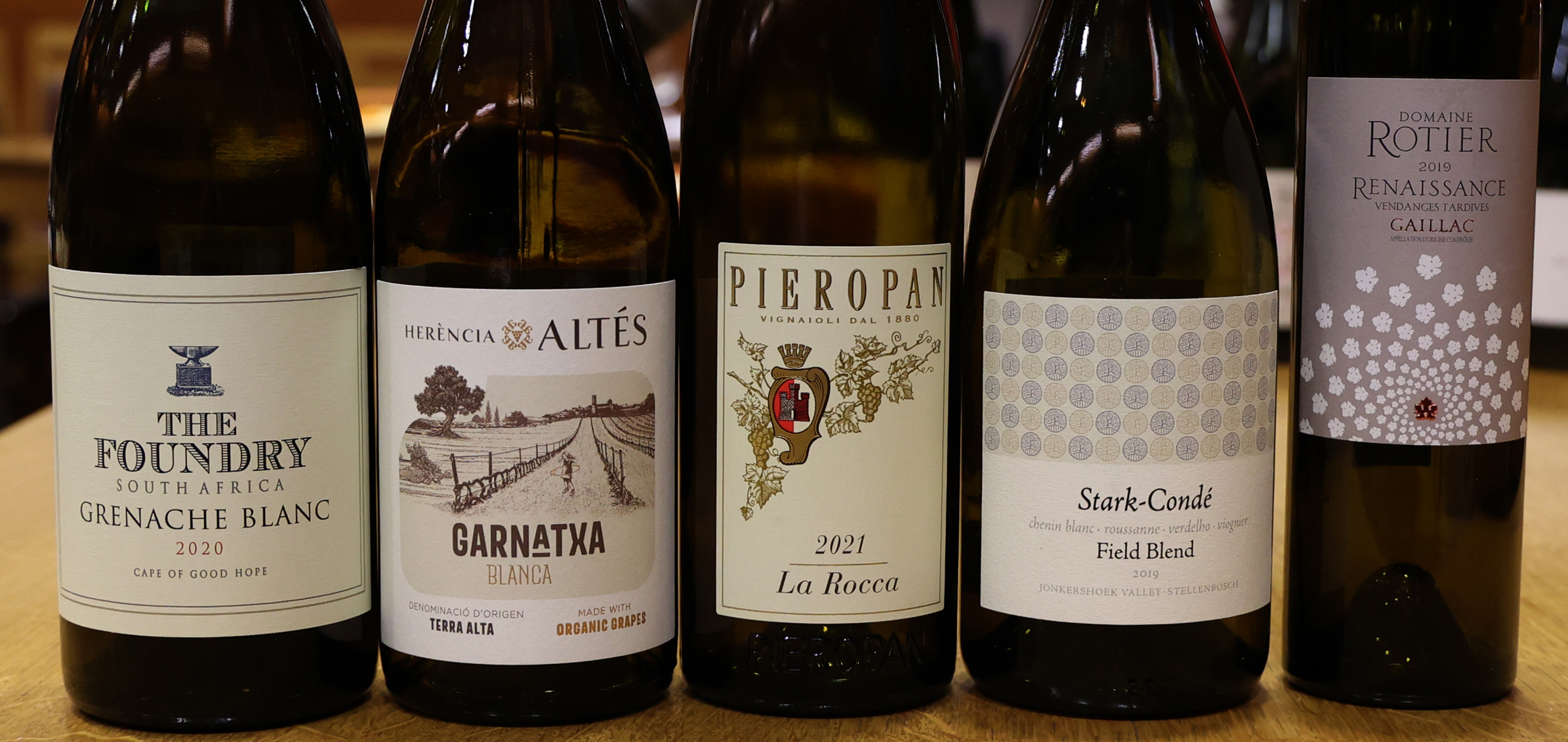
The evening took the form of various Club members reflecting on their memories of Charles and then introducing one of the wines he had donated to the Club. None of the presenters were able to taste the wines ahead of the event, so their observations relied heavily on their own research! We were delighted to have Charles’ daughter Judith and her husband John Paul in the audience.

---
The event began with Michael Palij, Club President, explaining to the audience that without Charles there would have been no Club. Charles had been a pupil on one of Michael’s early wine courses and went on to achieve his Diploma. A prodigious administrator, Charles was instrumental – indeed singlehandedly responsible – for achieving WSET certification for the wine courses held in Oxford. As a result of the conviviality of those attending the early courses and a desire to continue to learn more about wine, Charles and Michael went on to form the Club in 1997. Charles was the Secretary of the Club from then until 2004 and much, much more. Indeed he ran the Club pretty much singlehandedly in the early days. Many of the early Club tastings and some of the courses were held at Wolfson College, in the old Buttery, hence the choice of Wolfson as a venue for this tasting. Once room hire has been paid, the Club will be donating all proceeds from the evening to Sobell House, which looked after Charles so well in his final weeks.
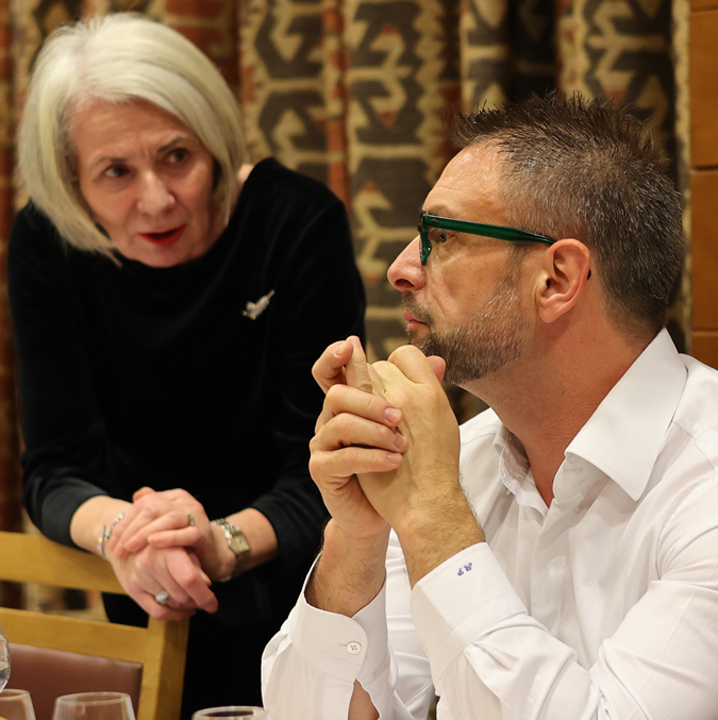
Michael then went on to introduce the Dönnhoff Oberhäuser Leistenberg Riesling Kabinett 2016, telling us that Helmuth Dönnhoff has said that 2016 was the best he had ever made from this vineyard. The wine has a superb sense of balance and precision and is a gorgeous, featherweight Riesling. It comes from one of Dönnhoff's less sunny vineyards, allowing slower fruit development. An air of honey is apparent here, followed by grapefruit and even white peach. Nice citrus on the finish, and smooth as you like. Medium off/dry, 9% alcohol, no oak, drink to 2025.
Charles’ own notes say:
This style of slightly sweet German wine is sadly not fashionable in the UK but for those who enjoy the style it provides great pleasure. It scored 17/20 from Julia Harding MW of Team Jancis: ”Distinctively fragrant, with a touch of blossom. Just smells of spring. And tastes of spring too. Sprightly, elegant, delicate and still beautifully persistent. Lingering. GV (JH)”
-----
Charles and the Faringdon U3A
Two of Charles’ friends from the U3A (Peter Robinson and Peter Smith) attended the meeting and spoke of Charles’ involvement with the U3A wine appreciation group, which he took over running in March 2011. They met in Charles and Dorothy’s conservatory monthly and enjoyed Charles’ expertise and excellent cooking. In Faringdon, Charles also organised wine quizzes as well as a broad range of tastings. Charles’ maxim was ‘the best guide to a wine is to read the label!’.
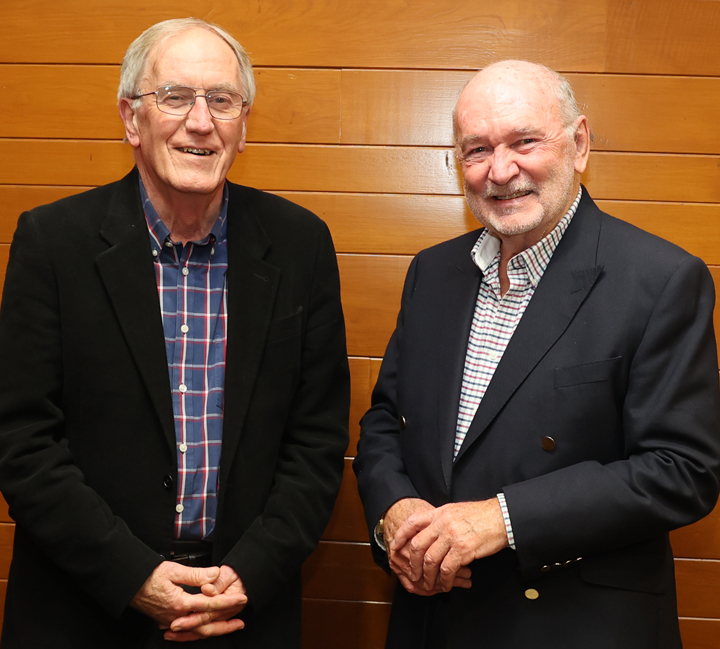
Roederer Estate Quartet NV
Graham Harding (a current committee member and Chairman 2004-06 and 2015-16) was to introduce this wine but unfortunately had to miss the tasting, so Michael Palij took on the task. A Californian made sparkling wine, made using the traditional method, Quartet is fresh and lightly fruity with great finesse and depth of flavour. It is crisp and elegant with complex pear, spice and hazelnut flavours. The wine tasted had some bottle age – one of Charles’ other maxims was that one should always keep a non-vintage sparkling wine for six months before drinking, to allow it to achieve some maturity. A blend of Pinot Noir and Chardonnay. 12% abv
----
David Spicer, Club Chairman 2002-03, spoke of Charles’ dedication to wine and also of the fun that was had on the courses and at the early tastings. Following his own father’s death, Charles became something of a surrogate father to him - certainly where wine was concerned!
David told us that his staff Xmas gathering in December 1995 was held in a little bistro at 15 North Parade. There was a raucous table having far more fun and he recognised someone he knew professionally and went over to ask her if this was her staff party. But no, she said, it was her wine-tasting group. I believe Michael was there that night.
David’s father had always been a wine enthusiast and tried to educate him at times but very little had stuck, but he had thought that one day he should do a course so David took the details and joined Michael’s Level 1 course in 1996. Obviously Michael added his own flair and storytelling into the learning and they all learned a lot and had fun.
He really enjoyed those classes and signed up for the Level 2 soon afterwards. Charles was certainly on the Level 2 course with David. As they neared the end of another 10 evenings at 15 North Parade which included several of tonight’s speakers the idea of giving themselves an ongoing excuse to go out in the evening and taste wines emerged and so the Club was born.
Charles of course was the driving force. David is not sure he realised this consciously at the time but when he considers it now, he realises he thought of Charles as a bit of a father figure, though he was 10 years younger than David’s father.
David’s’ father was diagnosed with cancer the same week the Club had its first tasting and he sadly died 5 months later, aged 65. David is sure others will rightly have tales of Charles’ dedication and skill at leading the Club in its early days.
When Charles and he discussed wines, David thinks they were conversations that maybe he would have had with his own father and when he looks back now he realises Charles was a wine mentor to him.
So that chance coincidence that Christmas brought David here.
Domaine Bégude Pinot Noir l’Esprit de Bégude 2022
Even though it’s located in the warm Languedoc, the cooler, high-altitude Limoux appellation can grow thin-skinned grapes that you’d normally find in Burgundy. That includes the internationally popular red grape, Pinot Noir. This example is made using careful organic methods at Domaine Bégude, a sustainably-minded estate. It's made from vines grown at 300m above sea level. As a result, it has fresh, fruity notes of cherry and raspberry, with gentle softness to the tannins. The wine is matured in 100% demi-muids. Try it with a roasted or pan-fried duck breast. 100% Pinot Noir. 12.9% abv. David commented that he had visited the winery some 3 years ago.
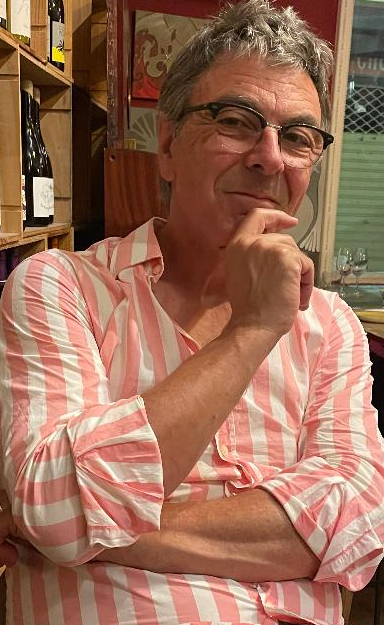
----
Hilary Reid Evans, (a current Club committee member and Club Chairman 2003-4 and 2012-13) spoke of Charles’ eye for detail and drive for precision from his pupils – she was taught by Charles whilst studying for her Diploma. She also referred to the law of unintended consequences – Charles perhaps did not realise it but in setting up the Club, he formed a community of like-minded wine lovers and sparked many friendships. She also referred to Charles’ role in negotiating the Club’s access to College Tastings, which means that offers can be made to Club members at preferential prices.
Diamantakis Winery Diamantopetra Vidiano – Assyrtiko 2022
Made in Crete, this is a Vidiano/Assyrtiko (50/50) blend. Assyrtiko, known for its intense minerality, is usually associated with Santorini, but here it is blended with an old Cretan grape variety, Vidiano. Vidiano is rich in fruit flavours that range from lime to apricot. The wine is a bright, pale yellow in the glass. The aroma is elegant with aromas and flavours of pineapple, apricot and chamomile and a long aftertaste. There is a softening touch of oak. 13.3% abv. Mentioning the rain outside, Hilary suggested those present forget the autumn weather and let themselves be transported to a Greek island with a mouthful of this wine.
----
Next, Hans Sundin (Chairman 2010-2011) and Sarah Eccles (Chairman 2006-07), spoke of Charles as a very dear friend – a friendship that started some 25 years ago when they moved to Oxfordshire and Sarah wanted to learn more about wine. Like many others, she got first in contact with Charles when enquiring about and later joining WineMatters course(s). Hans admitted that he thought the charge was very high but luckily he was ignored. Once they finished the course(s) they joined the Oxford Wine Club, which Charles had played a major part in setting up, and which he more or less ran by himself in its early years. It was when Charles stepped down that everyone realised how much work there was to organise both the tastings and the wine offers. Regarding the wine offers, Charles always had a keen eye for a bargain and he seemed to be able to track down wines for a keen price. He had the instinct to "never pay retail”! Over the years Hans and Sarah met up regularly with Charles and Dorothy to share their love of wine and food. Charles was a good cook and he was also very generous in serving some superb wines (many of which they had to taste blind…).
When Charles told Hans and Sarah earlier this year about his terminal cancer, he was anxious to sort out his wines. He had an extraordinary memory, till the very end, and knew all the wines he had acquired, where and why he bought them, and what
vintage they were, without having any sort of list.
However he could not remember exactly where they were located in his
extensive wine cellar (...AKA his garage). So Sarah and Hans agreed to
document and organise the wines, so he could find them easily. With typical generosity, Charles then decided that he wanted to donate many of his wines to the wine club.
Their final memory of Charles was about a month before he died and when he was quite unwell. Sarah, Ali, Andy (McLeod) and Hans went over to pick up the wines he wanted to donate. They thought he would have marked up the wine list and that the task was just to find these and load them into the cars. But, typically Charles, he sat in the garage and directed them as to which wines he wanted to give to the Club. He then told them the background to each of the wines and also suggested which wines should be used for tonight’s tasting.
Hans concluded by saying that ‘Charles sitting amongst his beloved wines will remain in our memories for many years to come’.
Sarah added that when they joined their first WineMatters course her level of wine knowledge was very minimal and her goal was largely to understand why she liked some wines more than others (and what she could expect to find in the bottles she saw on the shelves). She would never have imagined that she could learn how to taste and identify wines blind but one course led to another and she was eventually persuaded (by Charles and others) to join the first group to study for the diploma in Oxford. Largely thanks to the numerous tasting sessions, of such a wide variety of wines, organised by Charles, and his constant encouragement she did manage to learn to analyse wines sufficiently well to get through the challenging Diploma tasting exams.
Charles played a major part in introducing Hans and Sarah to the world of wine and inspired them to take many holidays to discover more about this endlessly fascinating subject. In its pursuit they have met many interesting and charming people and visited many beautiful places. Not least there was the opportunity to continue learning through the Club where, like others, they have made so many good friends with shared interests.
Domaine de la Rochette, Mâcon-Bussières Mont Sard 2017
This domaine is located in Southern part of the Maçonnais (not far north of the border with Beaujolais) and slightly to the north of Pouilly Fuissé It is a beautiful area of rolling agricultural land, much of it planted with vines, and dominated by some very spectacular craggy limestone outcrops in particular those of Solutré and Vergisson which mark the end of the limestone escarpment which runs through Burgundy.
Domaine de la Rochette consists of 8 hectares planted around the village of Milly-Lamartine and on the slopes of Mont Sard in Bussières. Milly-Lamartine was the home of the great 19th century French poet Alphonse de Lamartine, which is just the sort of fact which Sarah imagines Charles might have filed away for inclusion of one of his Christmas quizzes.
The domaine was bought in 2016 by Frédéric Burrier whose family has a long history of wine production in the Maçonnais and the Beaujolais, and who currently heads the negotiant business of Maison Joseph Burrier, which owns several estates including the Chateau de Beauregard in Pouilly Fuissé.
Burrier recognised that the shallow, well-drained, stony white limestone soils, covered with a thin layer of brown clay, had the potential to produce high quality white Burgundies. The chardonnay grapes for this wine come from 1.5 ha of old vines, mainly planted between the 1930s and the 1980s, on the sheltered south- west-facing slopes of Mont Sard at an altitude of between 300 and 400m.
They were cultivated without herbicides or insecticides (and most of Frédéric Burrier’s vineyards are now cultivated organically).
1/3 was fermented and matured in tank and 2/3 was fermented in barriques followed by 9 months on the lees in large 600l oak barrels (demi-muids) and then another few months in stainless steel vats.
The 2017 vintage which was reported to be a very good one in the Maçonnais.
Various comments from the reviews suggested that the 2017 might have an ageing potential of 3 years and we were concerned that it might be past its peak so Sarah was reassured to find that someone who had reviewed the wine several times on cellar tracker reported his last bottle had evolved but was still drinking well in February 2024.
The current vintage is available from the Wine Society for about £20.
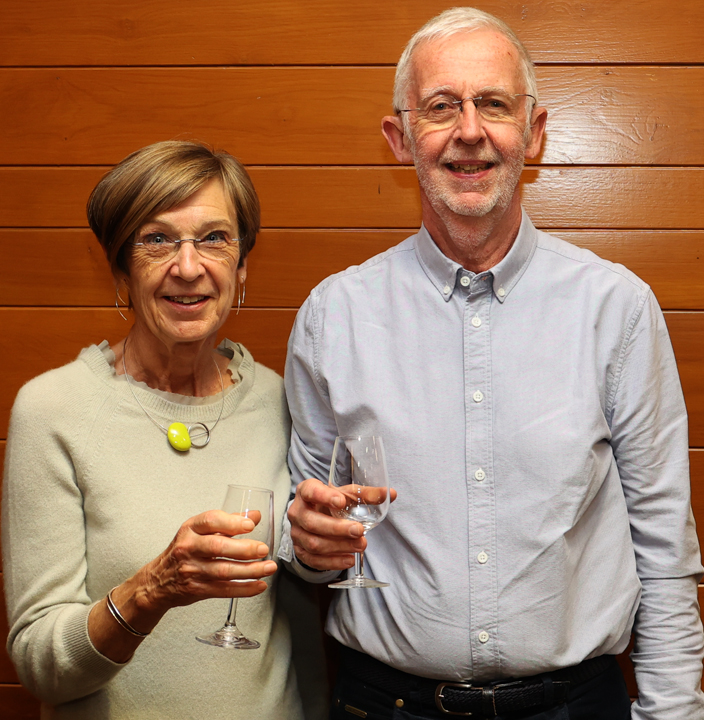
----
Peter Coggins (Chairman 2014-15) spoke of how he first met Charles on one of Michael’s courses in 1996. The course came to an end and both Charles and he wondered how we were going to continue tasting wines. There was no wine club in Oxford, the nearest being in Maidenhead. Then he received a letter from Charles asking if he would be interested in joining a wine club that he was planning to set up. This was Peter’s dream scenario and he told Charles so.
The first tasting on May 6th 1997 was of nine white Burgundies and was led by Simon Hoare of Morris and Verdin. Little did he know then that the Club would flourish and still be going strong 27 years later. The Wine Club has enriched his life and the lives of all the other people in this room tonight. Please raise your glass in celebration of what Charles achieved.
The Foundry Grenache Blanc 2020 (South Africa)
Awarded South Africa’s White wine of 2019. The Foundry Grenache Blanc has floral aromas with hints of lemon cream and white stone fruit. Full, orangey, peachy flavours, lovely texture and mouth-filling qualities. The palate is rich but restrained with focused, pure fruit. Mineral and zesty notes come to the fore on a long finish. Voor-Paardeberg Region (Coastal), 14% abv, vegan. Wine maker Chris Williams.
Fascinating grenache blanc a third of which fermented in oak, a third in terracotta and a third in stainless steel. The result is a toasty, smoky yet generous South African white with flavours of stone-fruits, supple acidity and a savoury mineral finish. (Wine Soc, in stock) £16.50 per bottle. Drink to 2026.
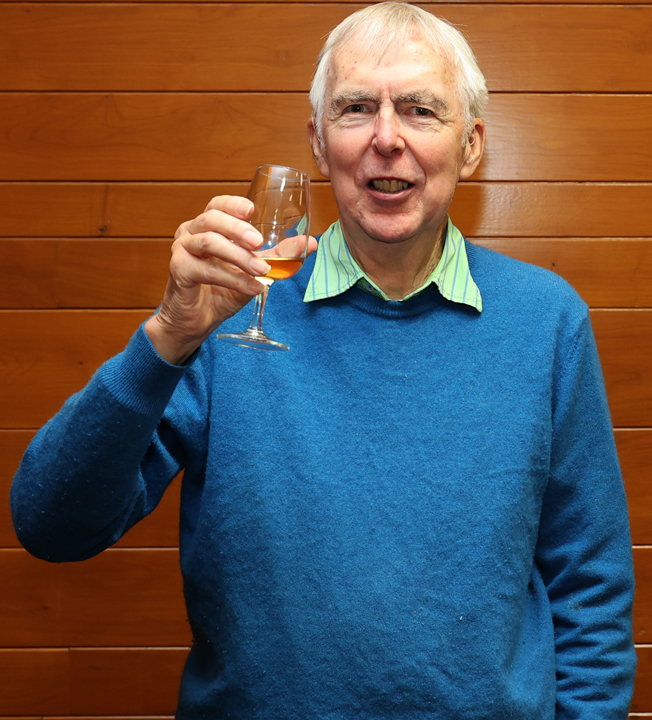
----
Chris Blakey, many times winner of Charles’ fiendishly difficult quizzes, admitted he had not attended any of Charles’ courses but was an enthusiastic member of what he referred to as Charles’ ‘wine buying syndicate’.
One of the wines Charles introduced Chris to – Mas de Daumas Gassac – remains a great favourite today. Charles has been much in his thoughts recently, having had experiences he would have loved to have shared with and discussed with Charles, including a visit to the Bellevue vineyard in Paris – the views were amazing but the wine not so! A second occasion was when Chris drank La Bernache with his brother-in-law. A semi-fermented wine (between 5 and 11% alcohol), and a feature in wine-making communities around the time of producing the new vintage, Bernache comes in just about every colour from green, through almost clear, to red and it bubbles.
Another happy coincidence is that when Chris was asked to speak tonight he was allocated the only wine in the list of 10 wines whose winery he had visited.
Herència Altés Garnatxa Blanca Terra Alta 2022 (Catalunya, Spain)
A fine, precise Spanish white which comes from Terra Alta, a small region WSW of Barcelona. It originates from a vineyard of sandy clay at 450m above sea level. The altitude tempers the warmth of the Mediterranean sun and two winds blow here that have a major influence on the grapes, with a north-westerly wind called the ‘Cerç’ bringing cooler conditions that help to retain freshness, and the ‘Garbi’, a milder breeze from the sea to the east that helps to ripen the grapes fully. Both winds also mitigate against vine diseases too, and all of the maker’s vineyards are currently converting to organic status. Food matching – seafood, olives.
Chris commented that the village from which the wine comes claims to have the highest percentage of tractor ownership per head and that the prior owner of the vineyard sold out to our very own Ali and Andy McLeod.
This is floral and appley, dry, with no oak, clean fruit and refreshing finish, perfect for well-dressed summer salads. The 2003 is available from the Wine Society, £11.95 bottle, drink to 2025, 13% alcohol.
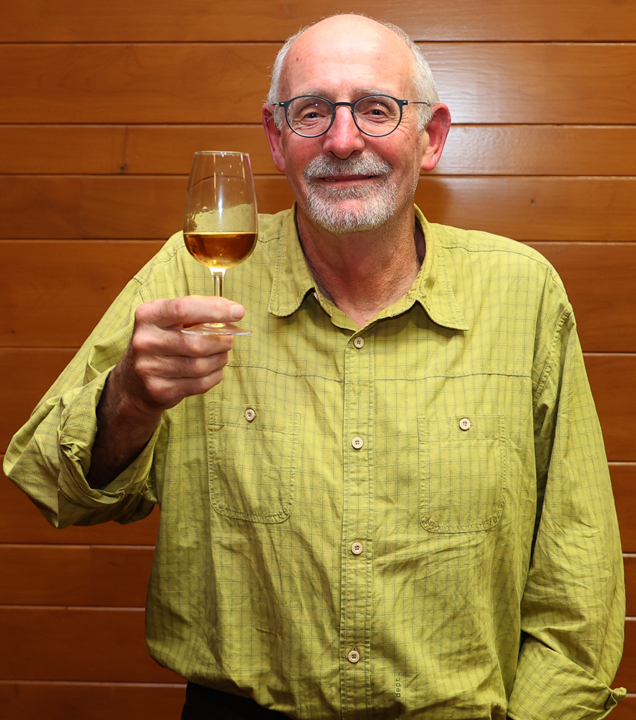
---
Jeff McIlhinney, (the Club’s first ever chairman, 1997-99) was unable to attend, so his observations were read out by Hilary Reid Evans. Jeff said he met Charles when he was doing his first WSET course held in a restaurant in North Parade. Jeff says ‘This was taught, in his inimitable style, by our beloved President Michael Palij’. He made the whole process so enjoyable and ultimately successful that the students decided that they had to find a way to keep on wine tasting. Obviously, the only way to do this was to start a wine club. In doing this it was fortunate that they had Charles as secretary where his organizational and networking skills helped the club become the formidable organization it is today. Jeff, as a nervous chairman, was grateful for his support during those early years.
Some years later when Jeff started his WSET diploma, he was pleased to discover that Charles was his tutor for the wine tasting section of the course. Here Jeff discovered a flaw in his palate. He simply couldn’t be doing with elegant white wines. He was too embarrassed to name these but where others were lavishing praise on their nose and writing poetic tasting notes, he was staring at notes that read “short, pale, odourless, and acidic”. Charles, bless him, patiently and ultimately successfully, tutored him through these difficulties. Thank you, Charles.
Given this limitation of his palate you can imagine Jeff’s consternation when Hilary informed him that he had to introduce a white wine tonight, namely Pieropan Soave La Rocca, which he hoped his palate would allow him to enjoy fully. Sadly Jeff could not be there to do so, but perhaps another opportunity will arise.
Pieropan Soave La Rocca 2021 (Veneto, Italy)
Described as the summit of Soave, La Rocca is a special single vineyard wine, grown on the only limestone outcrop in the region (the hill Monte Rocchetta) and allowed to develop in oak for a year to create a rich, but fresh wine. Herbal, lemony and with good minerality, this was hailed by one Wine Champions taster as ‘marvellous, and it will clearly continue to be so for several years’. (Wine Society, no longer available). Organic, 13% alcohol, oak used but not evident. Drink 2023 to 2031. 100% Garganega.
Charles own notes say: this scored 18/20 from Jancis herself – not quite as rare as a blue moon but unmissable. Pieropan is arguably the king of Soave, and this is a single vineyard wine – from arguably the finest site in Soave.
---
Carol Glanville (the Club’s first lady Chair and chairman from 2001-2002) told us how Charles has played a very pivotal role in her life. In 1996 she first met Charles at Rewley House where they sat next to each other on the first ‘Higher Certificate Course”. Being True Brits they went back to the same seat week in week out so they chatted a lot.
When Charles’ ideas for a wine club were forming he asked Carol if she would be involved in the initial committee. She said yes and in fact the first committee meeting was at her house, indeed that’s when she met Jeff McIlhinney for the first time.
With the Club well underway, in March 1998 Michael led a trip to Champagne for a bunch of people, in a minibus where they tried and failed to find Dom Perignon’s grave. It was on that trip she met John – now her husband!
In June of that year she was made redundant which in turn led to two significant turns of events – firstly, John invited her on a date to cheer her up - and the rest is history and secondly Charles (and Dorothy) invited her to go to France to stay with them in their house there – also to cheer her up. Carol did not know that part of France (the Tarn et Garonne) but absolutely loved it - very scenic and Charles and Dorothy’s house was delightful. She came home singing the praises of SW France.
In 1999 Carol and John married, with Charles and Dorothy attending their post wedding party and Carol’s 50th birthday celebration.
It was in 2007 when Carol and John arrived at a tasting (at Wolfson) to hear Charles telling someone that he was selling the house in France to give more time to visiting daughters and grandchildren. Carol and John were already booked to go to that region in June on holiday and asked if they could visit the house. It was an instant reaction – they wanted to buy it!
By the end of that two-week holiday they had agreed details with Charles and Dorothy, visited the bank in Toulouse to sort a mortgage and all was put in motion.
By October it was theirs, including all the contents. The anniversary of that purchase is next week (18 years) and Carol and John only came back from their latest visit the night before this tasting. They go 3-4 times a year and whenever there they are surrounded by very tangible memories of Charles and Dorothy. They were there when they heard the news that he had died and it was very emotional. Charles is remembered by all their French neighbours with great affection.
So directly or indirectly Carol says she owes Charles thanks for a husband, a house and a wine knowledge she never anticipated, and probably a deleted bank account too from buying so much.
From the bottom of her heart she thanks him.
Stark-Condé The Field Blend 2019 (South Africa, Coastal Region)
Made from a blend of Chenin Blanc, Viognier, Roussanne and Verdelho. From a single vineyard block which consists of the four different grape varietals. The grapes were co-planted with the specific intention of creating this unique blend. Somewhat green and flinty although the Roussanne and Viognier add richness and texture, while Chenin Blanc and Verdelho add bright fruit and acidity. The wine is lightly oaked.
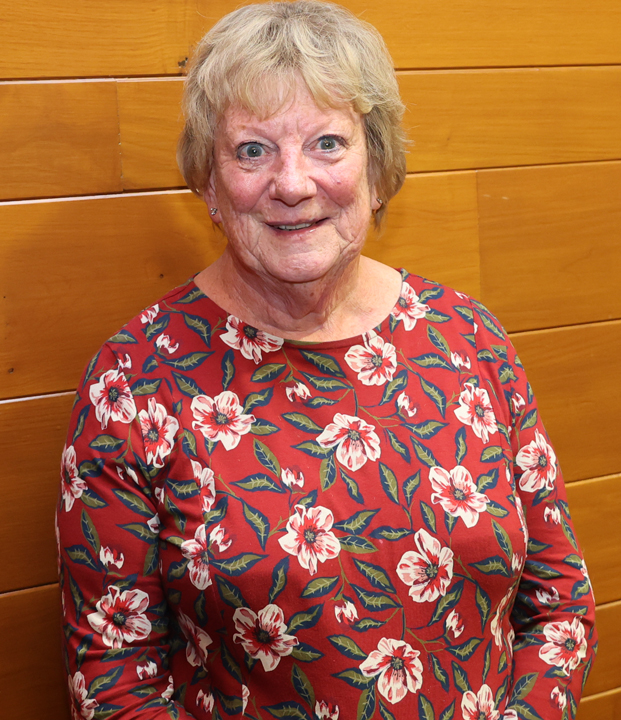
----
Karen Hyde (Chairman 2009-10) spoke of her wine journey, meeting Charles first when she wanted to complete her Diploma in Oxford, which she did successfully in 1999, although she admitted to failing her tasting exams first time round due to her pregnancy! However, with Charles’ encouragement she persevered. Indeed, Karen taught on the wine courses for a good 10 years. In 2004, when Charles stepped back from being Club Secretary, Karen took on the role and realised what huge boots she had to fill. It was Charles who helped her decide her career path should include wine, rather than landscape gardening, and indeed it did until she discovered her current calling. Karen is currently Chaplain at St Helen’s School in Abingdon.
Karen was delighted to present the final wine of the evening, saying it is a great favourite of hers and that of course Gaillac was close to Charles’ heart. She concluded by saying that wine is a product of sun, rain and soil as well as the endeavours of man and a source of awe and wonder.
Domaine Rotier Renaissance 2019 (SW France)
A sweet white wine with c190g of residual sugar. Made from 100% Loin d’Oeil. The vines are planted on a terrace overlooking the Tarn River. Aged in both oak and acacia wood barrels (10% new) for 10 months. Full-bodied and rich, with notes of apricots, figs, white flowers and citrus fruit that combine harmoniously. Long finish on the palate. 50cl bottles. The wine could age for a further 20 years. Around £17 a bottle from various sources. This producer also makes dry white and red wines.
---
Photographs by John O’Brien
David Spicer’s photograph, David’s own
Write up by HRE, using original notes given by the presenters and from her own notes of the evening. And a thank you to Graham Harding for spotting all those typos!
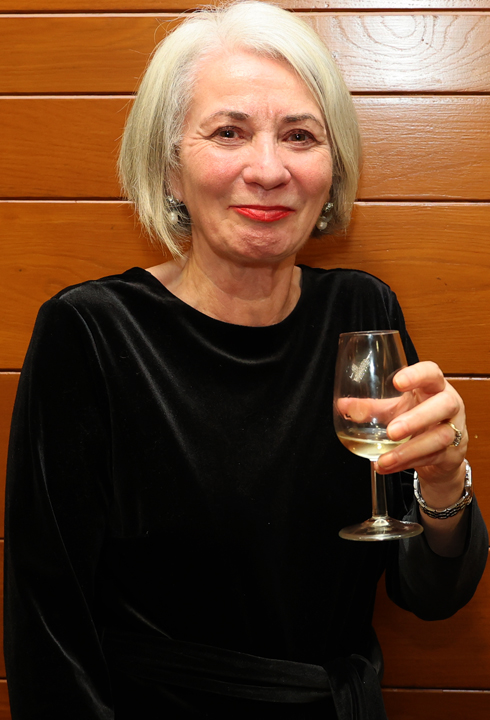
Cheers Folks!